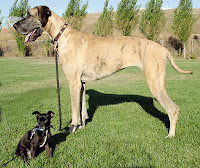Today we will start a new topic in our subject of Natural Science. We are going to learn and investigate about THE ORGANISATION OF LIVING THINGS.
First of all we are going to start with the main characteristics of the living things. Let's have a look to the following video and try to identify the main characteristics of a living thing: What things make something to be a living thing?
Let's think on that question using a THINKING ROUTINE: Think - Pair - Share.
VITAL FUNCTIONS
Nutrition: Transform food into simple subtances: nutrients, and then get energy from them. Plants use the oxygen they take through leave to make their own food. Animals eat other living things.
 |
| House for Giant Pandas, Michael Tyler (CC BY-SA 2.0) |
Interaction: It is the ability of living things to sense the changes in the enviroment and react to them.
 |
| Sun...flower, James Ryckwood (CC BY 2.0) |
Reproduction: It enables living things to produce offspring similar to themselves.
 |
| Baby dessert tortoise, U.S. Geological Survey |
Let's pratise your knowledge using this game. You can play in pairs, each one will run a colour of the game.
THE SIZE OF LIVING THINGS
Macroscopic things: Living things that we can see with the naked eye.
 |
| Big and little dog, Ellen Levy Finch, (CC SA-BY 3.0) |
Microscopic things or microorganisms: They are living things that are so small that we cannot observe them even with a magnifying glass. To look at them we need a microscope.
 |
Let's do an investigation task about MACROSCOPIC and MICROSCOPIC living things. Each one of you will create a chart with a photo, the name of the living thing and the dimensions of the living things. We will make a big poster with all of them.
- Microscopic:
- Macroscopic:
Before finishing this part of the topic it would be great to think a bit about what you have learn. This part will be called de Learning Diary. Let's think a bit in these three questions and take some notes about your learning in your notebook.
- What have you learnt?
- How did you learn?
- Would you like to investigate or learn a bit more about any of these aspects?


No hay comentarios:
Publicar un comentario